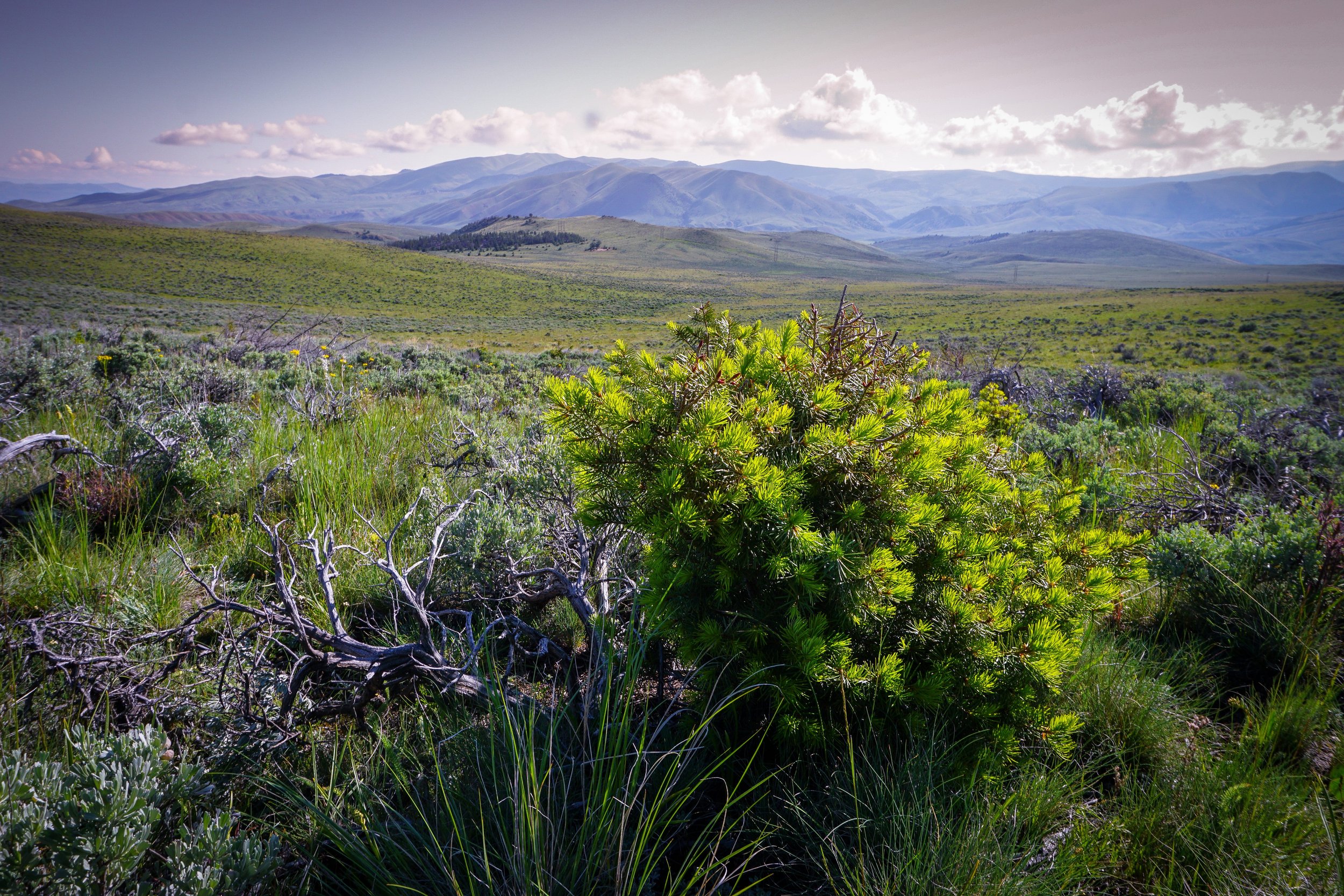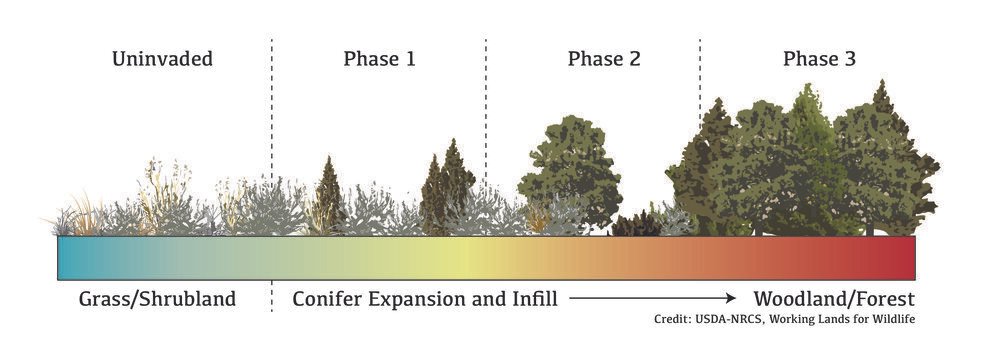Targeted Conifer Removal Improves Sagebrush Habitat
Across the sagebrush sea, pinyon and juniper species are expanding into historical shrubland and grassland systems. This creates a management challenge for these ecosystems, as expanding trees threaten habitat for sage grouse and other wildlife species. This expansion also alters ecosystem function by competing for water and other resources, displaces native shrubs and grasses and decreases landscape resiliency to climatic changes. In a collaborative effort, land managers across the sagebrush biome use targeted conifer removal to improve and maintain habitat for sage grouse and other wildlife, increase rangeland productivity, and restore the quality of working sagebrush landscapes across public and private lands.
Since 1860, cover of pinyon and juniper species has increased by 125-625%. Increases in cover are explained by trees expanding their footprint into formerly treeless areas, like sagebrush steppe and grasslands, and infill of existing pinyon-juniper woodlands. About 80% of increased cover occurs as infill within existing woodlands. Both infill and expansion are thought to be a result of changing climate, historical management, and fire suppression, although research on this topic is not conclusive, and these causes vary spatially across the sagebrush biome. Local data is needed to identify trends, drivers, and appropriate management approaches.
Conifer species are increasing in cover across the landscape, with trees both expanding into formerly treeless shrublands and grasslands, and infilling existing woodlands.
As trees expand into the sagebrush, they reduce perennial grass, forb, and shrub cover. These changes can reduce habitat and forage for wildlife and livestock, and increase the risk of high severity fires. Sage grouse move out when trees move in, actively avoiding areas with more than 4% conifer cover. However, recent research in the Warner Mountains of Oregon showed that where junipers were removed, the sage grouse population growth rates were 12% greater than where no trees were cut. Land managers use this growing body of research to design treatments that help improve habitat for sage grouse and other sagebrush-dependent wildlife.
Putting Science into Practice
A growing body of science and tools are available to help managers target conifer removal treatments to improve and maintain wildlife habitat and achieve other management goals. We support our partners in using these tools and implementing targeted conifer removal efforts. Learn more about what we’re up to:
-
Our work seeks strategic implementation of science-supported practices, including strategic conifer removal, that provide wins across the board for wildlife, their habitat, and for the people living and working in the same landscapes.
-
Members of our Sage Capacity Team support strategic conifer removal efforts across the sagebrush biome. In the Owyhee Uplands of Southwest Idaho, the Bruneau Owyhee Sage grouse Project Outreach Coordinator coordinates the largest conifer removal effort to date. The Bristlecone Project Coordinator supports the BLM in Ely, Nevada to plan and implement such efforts across ownership boundaries. Additional Sage Capacity Team members carry out this work as a part of their ongoing efforts across the sagebrush sea. As of 2022, our partnership has already completed conifer removal on 300,000 acres across the sagebrush biome. Reach out to Charlie Holz, our Sagebrush Field Delivery Capacity Specialist, to learn more.
-
Our Science to Implementation Team supports our partners in using the latest data to prioritize and plan conifer removal work, maximizing ecological and wildlife benefits. Reach out to Andrew Olsen, our Science to Implementation Coordinator, to learn how we can support you.
Learn more about Conifer Expansion and Removal:
The Pinyon-Juniper Encroachment Education project website is a science-based resource on woodland encroachment in sagebrush ecosystems.
Looking for More Resources?
Check out the Resilient Landscapes Resource List. To assist partners with access to resources for project planning and assessment and to cut down on time spent searching for resources, we created a database of key resources related to fire and invasive annual grasses, wet meadow restoration, grazing, woodland expansion, game corridors, and more.
Resources that can be found here include science papers, frameworks and strategies, reports, data sources and tools, research syntheses and guides, webinars and workshops, factsheets, facilitation and collaboration resources, and communications resources.































